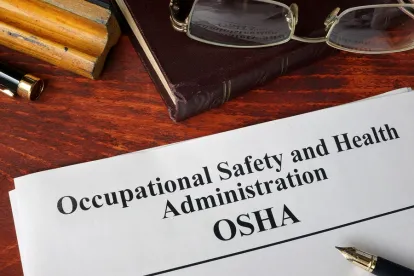Manufacturing equipment can be dangerous. Hazards associated with manufacturing equipment can come in a variety of forms, such as pinch points, sparks, or flying debris. OSHA regulations require equipment with moving parts to have specific protection mechanisms in place – often referred to as machine guarding. Machine guarding can take many forms, such as barriers, light curtains, and two-hand trips.
In 2019, the last year for which complete data is available, machine guarding violations were in OSHA’s top 10 most cited violations, as well as OSHA’s top 10 list for “serious” violations and for “willful” violations. Of the 1,969 machine guarding violations OSHA issued citations for between October 1, 2018 to September 30, 2019, 1,737 were classified as “serious” and 13 were classified “willful”.
However, not all of these citations become final, or at least not in the form issued. Some employers choose to challenge citations to OSHA’s Review Commission. For those not familiar with OSHA’s Review Commission, it is a three Commissioner panel appointed by the President and confirmed by the Senate. The Commission hears appeals of contested OSHA cases. Contested cases can take a while to work their way through OSHA’s contest case process and receive a decision from the Commission. The three cases discussed below involved citations issued in 2014 and 2016.
Last month, OSHA’s Review Commission issued two decisions vacating machine guarding citations and one decision reclassifying a “willful” violation to a “serious” violation and reducing the penalty from $49,000 to just $3,500.
In Dover High Performance Plastic, Inc. the manufacturer was cited for allowing employees to operate lathes and mills with the doors removed or opened. While the Commission ultimately eliminated the “willful” citation related to the mills, the Commission upheld the violation for the lathes and reduced its classification from “serious” to “willful”. The Commission relied on a finding of “good faith” compliance on the part of the manufacturer to reclassify the violation and to reduce the $49,000 penalty issued for both violations to a $3,500 penalty for the remaining violation.
In Aerospace Testing Alliance, an employee lost part of his finger after circumventing machine guarding and removing his safety glove. The citation was overturned after the Commission found that under normal operations the machine guarding in place was OSHA-compliant and it was unreasonable for the manufacturer to predict that the employee would evade the guard in the manner he did.
Lastly, in Wayne Farms, an employee was injured after reaching inside a machine while it was running. To do so, the employee had to lift a metal gate. Similar to the Aerospace decision above, the machine guarding was found to be sufficient during normal operations and the manner by which the employee bypassed the guarding was not reasonably predictable.
While Commission decisions tend to be fact-specific and heavily-reliant on the details of each citation, these decisions may provide manufacturers with some level of comfort. If a manufacturer continues to comply in good faith with the machine guarding regulations and take necessary and reasonable precautions to protect their employees while operating equipment under normal conditions, it should not be subject to OSHA citations. Accidents happen and employee behavior cannot always be predicted and anticipated, but following OSHA regulations and regularly training employees on the proper operation of equipment and respect for machine guarding can help reduce the chance of injuries, accidents, and OSHA citations.



 />i
/>i

